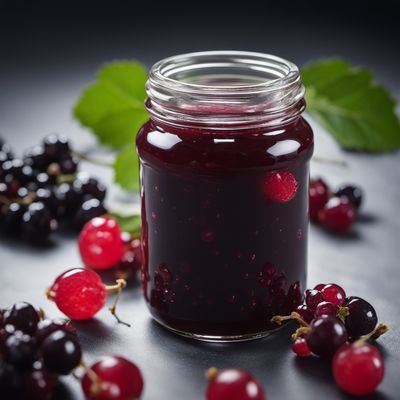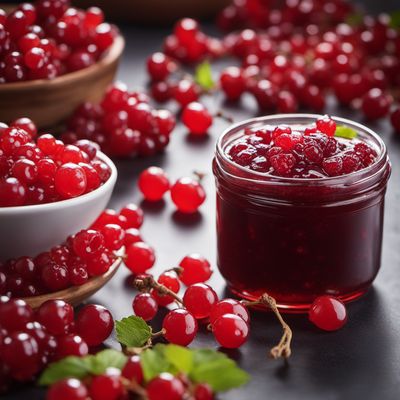
Ingredient
Jam, apricots
The Sweet Preserve
Apricot jam has a smooth and luscious texture, with a vibrant orange color and a sweet-tart taste. It is made by cooking apricots with sugar and sometimes lemon juice to create a thick and flavorful preserve. This jam can be enjoyed on toast, pastries, or used as a filling in cakes and cookies.
Origins and history
Apricots have a long history that can be traced back to ancient China, where they were cultivated over 4,000 years ago. They were later introduced to Persia and then spread to other parts of the world through trade routes. Apricot jam became popular in Europe during the Middle Ages and has since become a beloved preserve in many cultures.
Nutritional information
Apricot jam is a good source of vitamins A and C, as well as dietary fiber. It is also relatively low in calories compared to other sweet spreads. However, it is important to consume it in moderation due to its sugar content.
Allergens
Apricot jam does not typically contain allergens. However, it is important to check the ingredient list for any additional additives or allergens that may be present in commercially produced jams.
How to select
When selecting apricot jam, look for ones that have a vibrant orange color and a smooth consistency. The jam should have a balanced sweetness and tanginess, without any off-flavors or artificial additives. It is recommended to choose jams made from high-quality apricots for the best flavor and texture.
Storage recommendations
To maintain the freshness and quality of apricot jam, store it in a cool and dry place away from direct sunlight. Once opened, it should be refrigerated to prolong its shelf life. It is important to use clean utensils when scooping out the jam to prevent contamination.
How to produce
Apricot trees can be grown in home gardens or orchards, provided the appropriate climate and growing conditions are met. They require full sun, well-drained soil, and regular watering. It is advisable to consult local gardening resources or experts for specific cultivation guidelines.
Preparation tips
Apricot jam can be used in a variety of ways, such as spreading it on toast, croissants, or scones. It can also be used as a filling for cakes, cookies, or pastries. Additionally, it can be incorporated into savory dishes like glazes for roasted meats or as a condiment for cheese platters.
Culinary uses
Apricot jam is commonly used in breakfast and dessert recipes. It is a popular spread for toast, English muffins, and pancakes. It can also be used as a filling for tarts, thumbprint cookies, or sandwiched between cake layers. Apricot jam pairs well with various cheeses and can be used as a glaze for roasted meats or poultry.
Availability
Apricot jam is commonly available in regions where apricots are cultivated, such as Turkey, Iran, Italy, Spain, and the United States. It is also widely distributed and can be found in many supermarkets and specialty food stores worldwide.
More ingredients from this category » Browse all

Jam, gooseberries
Tart Delight

Jam, peaches
Sun-Kissed Delight: Exploring the Sweet Symphony of Peach Jam

Jam, currants (black)
"The Bold and Tangy Delight: Black Currant Jam"

Jam, mixed fruit
"A Symphony of Fruity Delights: Exploring the World of Mixed Fruit Jam"

Jam, blueberries
Bursting with Blueberry Bliss: The Delightful World of Blueberry Jam

Jam, blackberries
Berry Bliss

Jam, raspberries
The Essence of Summer

Jam, currants (red)
"Tart and Tangy Delight: Exploring the Vibrant World of Red Currant Jam"

Jam, mandarins
Tangy Citrus Delight: Exploring the World of Mandarin Jam

Jam, oranges
Tangy Citrus Delight: Exploring the World of Orange Jam

Jam, plums
The Sweet Preserve

Jam, lingonberry
Tart and Tangy Delight: Exploring the World of Lingonberry Jam
Recipes using Jam, apricots » Browse all

Bruneian Battenberg Cake
Tropical Delight Battenberg Cake

New York-Style Cheesecake
Budapest-Style Cheesecake

Buccellato - Traditional Italian Sweet Bread
Sicilian Delight: A Sweet Journey with Buccellato

Hungarian Cheese Dumplings with Apricot Sauce
Savory Delights: Hungarian Cheese Dumplings with a Sweet Apricot Twist

Korean-inspired Sachertorte
Gochujang-infused Sachertorte: A Fusion Delight

Mirabelle Plum Tart
Golden Delight: Mirabelle Plum Tart

Classic Sachertorte Recipe
Decadent Chocolate Delight: The Ultimate Sachertorte Experience

Agnes Bernauer Torte
Bavarian Delight: Agnes Bernauer Torte

Shanghai-style Apricot Cake
Tangy Apricot Delight: A Shanghai Twist on a Classic Cake

Dutch Esterházy Cake
Dutch Delight: Esterházy Cake with a Dutch Twist

Sachertorte
Decadent Chocolate Sachertorte: A Latvian Twist on an Austrian Classic

Afrikaanse Bobotie Stew
Spicy and Savory Afrikaanse Bobotie Stew